Whether viewing a car for sale or assessing what needs to be done to your existing vehicle, recognising the tell tale signs of rust, bodges and paint imperfections is an invaluable asset. Here’s some of the basics to help you become a paint inspection expert
It’s easy to be swayed by sight of shiny paintwork when looking at a prospective purchase and overlook the imperfections. In the same way, before cracking on with an existing project, it’s important to get an accurate picture of what’s going on with your paintwork and what’s likely to be involved trying to put it right. It’s a case of taking your time, looking carefully and taking off those rose-tinted spectacles…
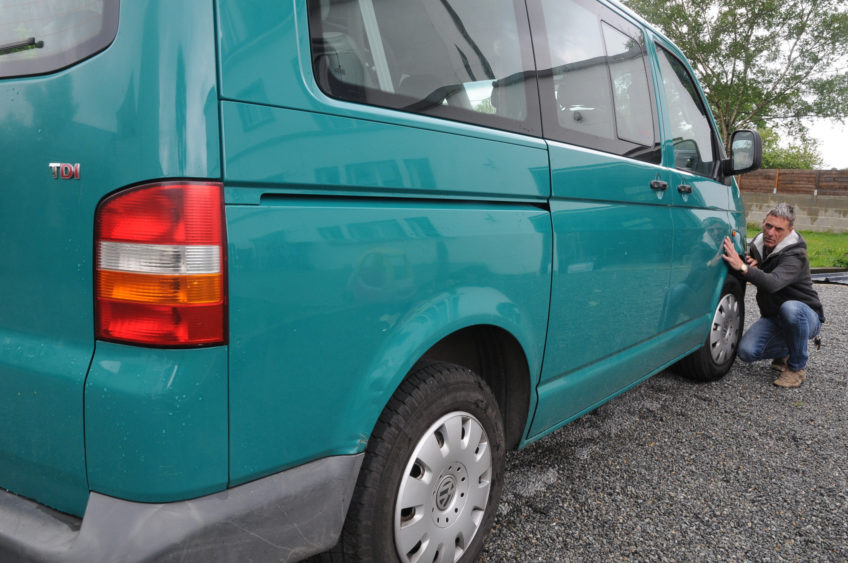
Panel gaps
Starting with the structural stuff first, inspect your vehicle’s panel gaps. Being a quality product, VW made them even all round to begin with – and if they’re not now, there’s likely to be a problem. Your vehicle may be suffering from worn hinges, misaligned latches, low quality or badly fitted panels or accident damage. Worst still, if it’s an older vehicle, it may be suffering from structural rot which is much more serious and more expensive to put right.
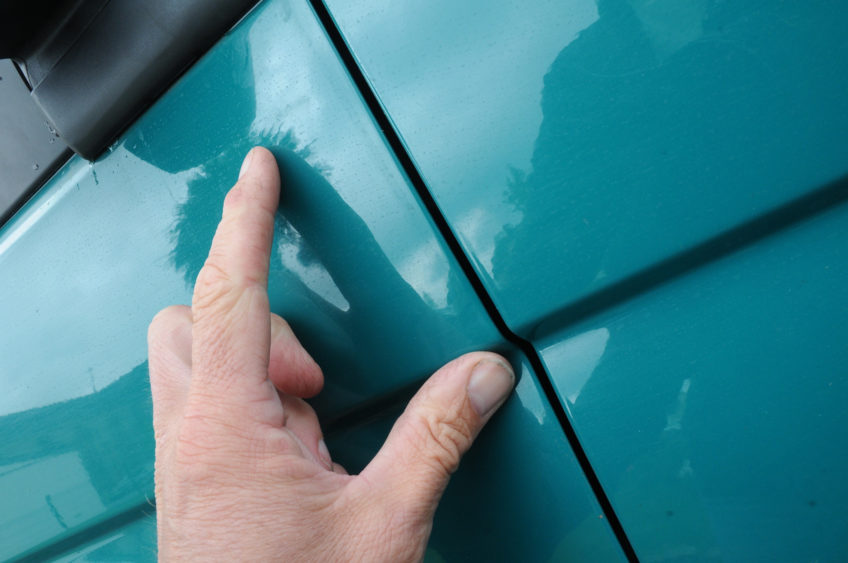
Panel rust
Inspect the paintwork on your car for signs of bubbling, rust scabs and evidence of rust streaks which are produced by water running over an otherwise hidden rust spot. Areas like this will need investigating further to see the extent to which corrosion has spread and if they’ve lead to any holes. Chances are, what you can actually see is likely to be the tip of an iceberg. Catch corrosion before it gets worse by either welding up the affected area or fitting a new panel. Furthermore, it might be worth investigating why the panel has rusted in the first place. Is the rust a result of poorly carried out accident repairs, is something coming into contact with the paint (perhaps if a panel hasn’t been aligned properly), has a seal failed? If there’s an underlying cause, it will rust out again.
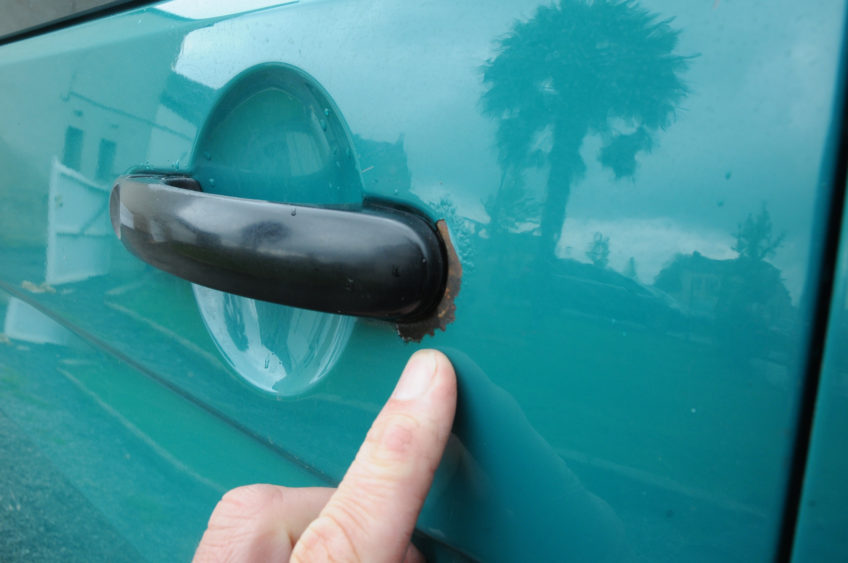
Paint blemishes
Crazing, flaking and micro-blistering is usually due to moisture being trapped beneath the top coat, too much paint being applied, the use of filler or a reaction to a layer of previously applied paint. The only solution here is to go back to bare metal, do the proper preparation and start all over again.
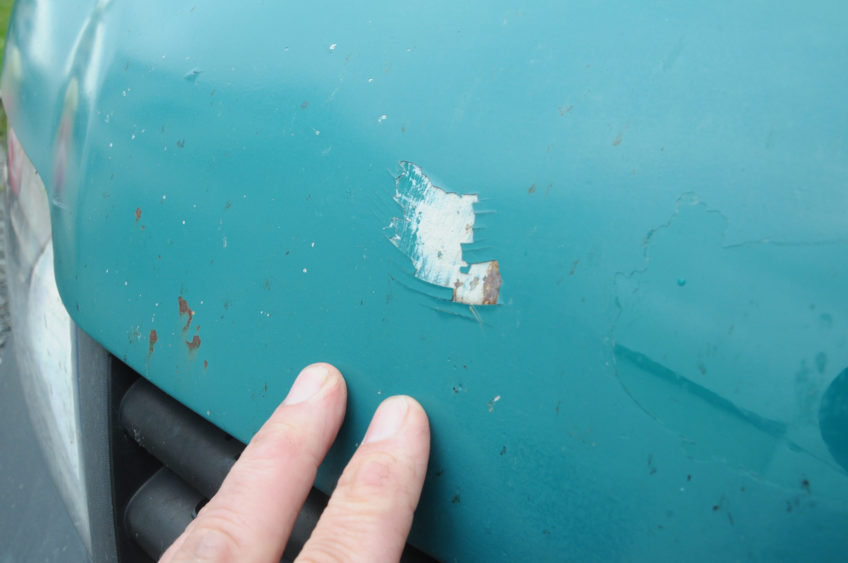
Paint type
Many older cars were painted in a solvent-based cellulose, with two-pack (2K) paint replacing them in the mid-1970s. However, for environmental reasons, water-based paints have been used for the last 20 years. Here, a water-based colour is sealed with a two-pack clear lacquer. Applying a solvent based paint (if you find any) over a two-pack system will cause a reaction. Two-pack/water-based paints can be applied over older paint, but it’s always safest to either go back to bare metal anyway or apply an isolating primer just in case.
Overspray
Changes in paint finish, fading and signs of micro scratches due to overzealous use of a polishing buff, point to the fact that a panel’s probably been resprayed at some point. Other clues include overspray on window rubbers and plastic trim. Sometimes careful polishing can help, though don’t go too mad otherwise you find you’ve gone down to the undercoat.
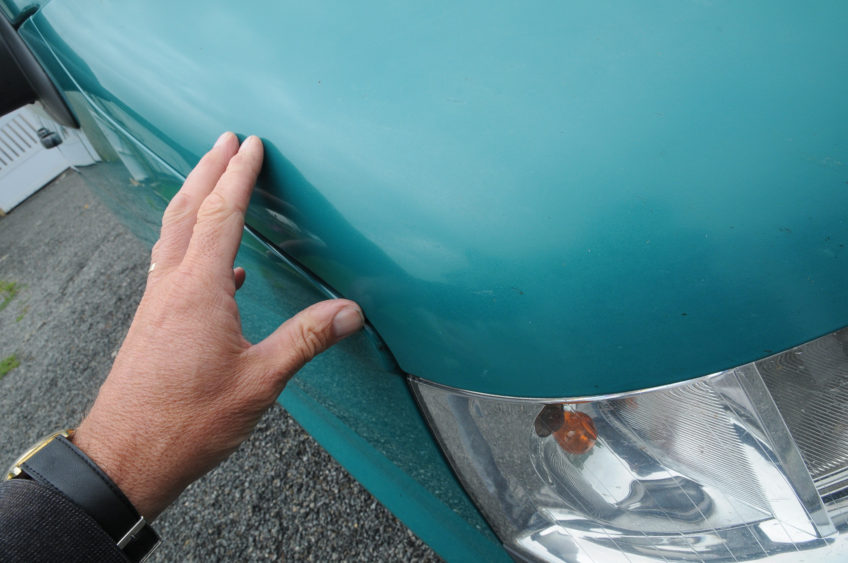
Dents
Get down and look along the side of your vehicle and check for minor dents or ripples in each of the panels. Car parking dents are common on doors and if there is access behind, they can often be dressed out by a ‘smart’ repairer quite successfully. If a panel has a lot of dents, however, it may be better (and cheaper) to replace the complete panel. Where there’s limited access from behind, it will be a case of removing the paint, panel beating and applying a thin layer of filler. Yes, even the experts use it!
Paint ID
Applying fresh paint over existing paintwork is a recipe for disaster, particularly if you’re using a different type of paint which will lead to a reaction. Polish a small section of bodywork and check the cloth; if it’s picked up a hint of colour from the paint then it’s a solid colour, if there’s no transfer there’s been a clear coat of lacquer applied.
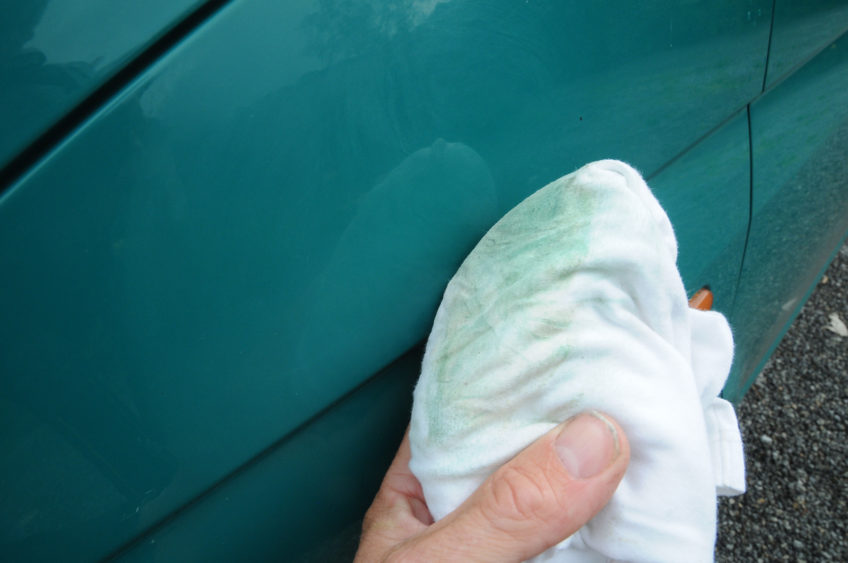
Paint code
Finally, if you’re doing any paint repairs it obviously helps to know what colour your car is. You’ll find the code in the service booklet. Each paint colour contains several different shades of paint, called ‘tinters’, which are mixed together in specific quantities, according to the manufacturer’s formula. However, confusingly some colours have several different formulas and getting the match just right is never easy. What’s more, some paints are more susceptible to fading than others. Reds are prone to turning pink and whites can go grey over time. That’s why repainting just one panel, individually, is never as successful as painting a complete car.
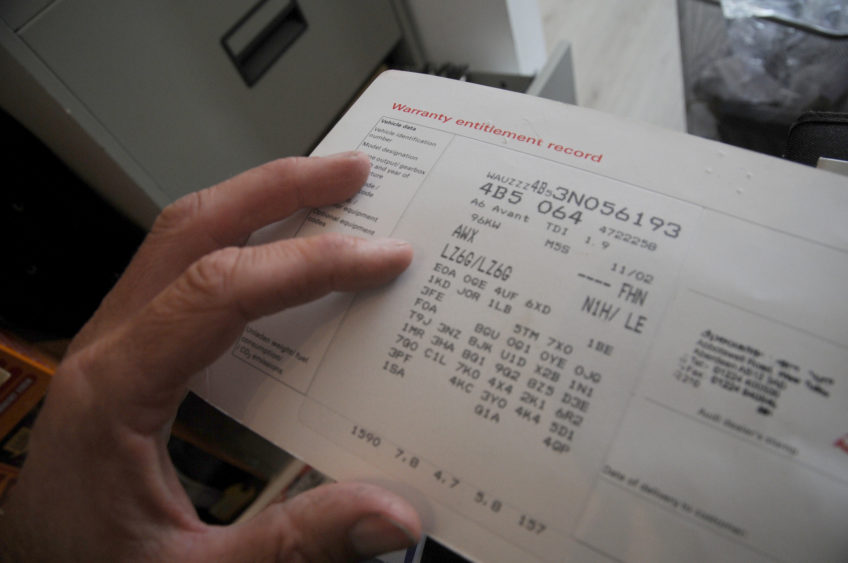
If you become savvy at spotting paint blemishes, use that knowledge to your advantage the next time you view a car for sale. If you see something wrong, use it as a negotiating tool when talking turkey about price. And if those imperfections are on your own car, well as we’ve said, with the necessary time, a bit of patience and a polishing cloth, there’s lots you can do to improve matters.
Ian
The opinions expressed here are the personal opinions of the author and do not necessarily represent the views and opinions of VW Heritage

